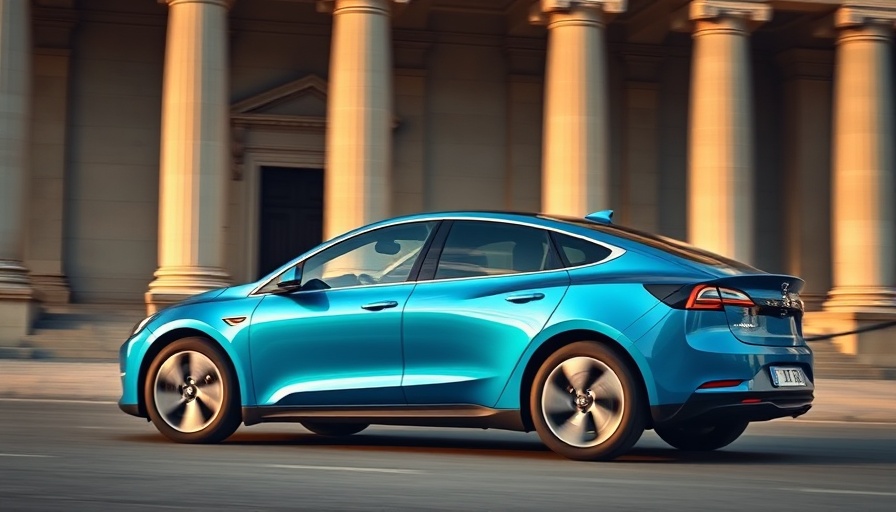
Revolutionizing Electric Vehicles: BYD’s Revolutionary Fast Charging
Chinese automaker BYD has recently made headlines with the launch of its new Han L sedan, a vehicle boasting the incredible capability of adding up to 248 miles of range in just five minutes of charging. This announcement, however, raises several questions about the feasibility and reliability of such fast charging technology. To better understand how BYD is attempting to change the electric vehicle (EV) landscape, we delve deeper into the vehicle’s specifications and charging technology.
The Hidden Power of Battery Chemistry
At the heart of the Han L’s rapid charging ability lies its advanced battery design. BYD utilizes an 83.2 kWh lithium-iron-phosphate battery pack that operates at a high voltage of approximately 945 volts - a significant leap from typical lower-voltage systems found in conventional EVs. Not only does lithium-iron-phosphate chemistry offer enhanced safety (critical for EVs), it has also demonstrated superior charging speeds due to its inherent electrochemical properties. This battery design is crucial for fast charging, presenting a potential game-changer for EV adoption.
High-Voltage Architecture: An Evolution in EV Technology
BYD’s decision to employ a high-voltage electrical architecture is pivotal for its charging ambitions. Traditional EV systems often generate heat during the charging process, which can limit the efficiency and speed of charging. However, higher-voltage systems, like that of the BYD Han L, can help mitigate heat generation, allowing for faster and safer power delivery. This innovation aligns BYD with competitors like Lucid Motors, which operates a 900-volt architecture; however, BYD takes it a step further, aiming to operate closer to a total output of one megawatt—significantly above the 350 kW offered by current high-end chargers on the market.
BYD's Clever Charging System
To maximize charging efficiency, BYD has developed an ingenious dual port system in the Han L. This allows both ports to connect to a single high-capacity charger, enabling the car to achieve the impressive one-megawatt threshold. Such innovations could potentially simplify the infrastructure needed to support ultra-fast charging, making it accessible to more consumers. However, it raises practical concerns regarding the infrastructure needed to support such high voltage connections.
Optimistic Ranges: Setting Realistic Expectations
Despite BYD’s bold claims regarding its charging capabilities, skepticism remains regarding the real-world implications of their range estimates. The company derives its range figures from the Chinese CLTC testing cycle, known for being more lenient than the EPA standards used in the U.S., which may inflate perceived ranges by up to 35%. This discrepancy could impact consumer trust, especially as potential buyers navigate through various EV options based on range and charging speed.
The Future of Fast Charging Technology
Looking ahead, BYD’s innovations may set the stage for wider acceptance of electric vehicles. As the auto industry shifts toward sustainable energy solutions, technological advancements like these could bridge the gap between gasoline-powered vehicles and electric options by alleviating range anxiety—one of the largest barriers to EV adoption today.
Adapting to Market Needs
The competitiveness of the EV market compels manufacturers to constantly innovate. The rapid advancements brought forth by BYD could signal a shift in purchasing behaviors, encouraging consumers to opt for electric options when the charging experience aligns with their expectations, matching the speed and convenience of filling a gas tank. If BYD and others can successfully roll out such technologies, it will catalyze a substantial evolution in consumer attitudes towards electric vehicles, enhancing both convenience and sustainability.
Staying Informed on Technology Developments
For those interested in keeping up with innovations in the electric vehicle sector and broader tech trends, understanding these developments is crucial. Whether you own an electric car or are contemplating switching from gas, the ongoing advancements not only influence vehicle choices but also reshape the entire vehicle industry landscape.
By staying informed and engaged, consumers can become part of the conversation that will drive future innovations. With fast charging potential unfolding before our eyes, now is an ideal time to consider making the switch to electric.
 Add Row
Add Row  Add
Add 



Write A Comment